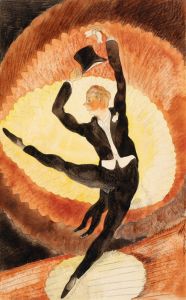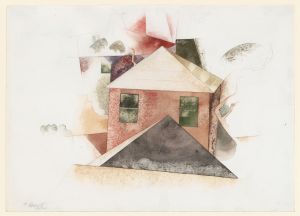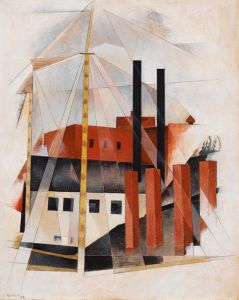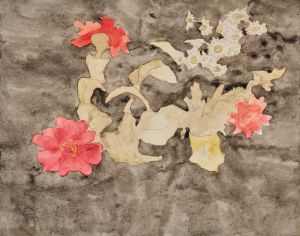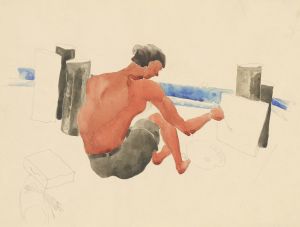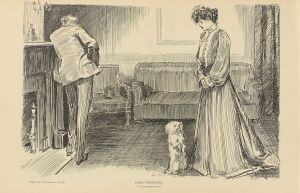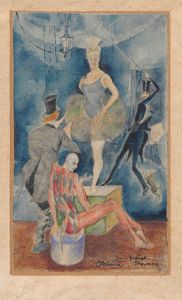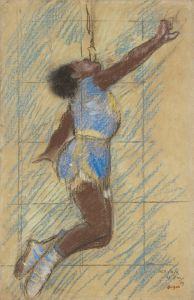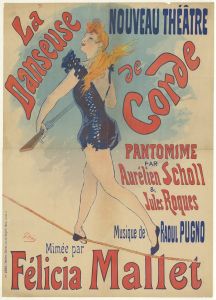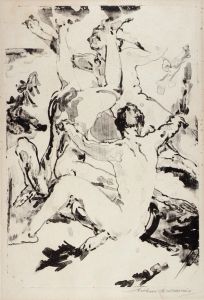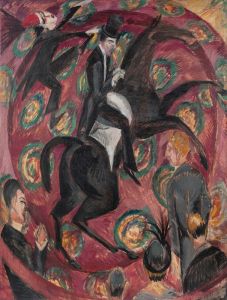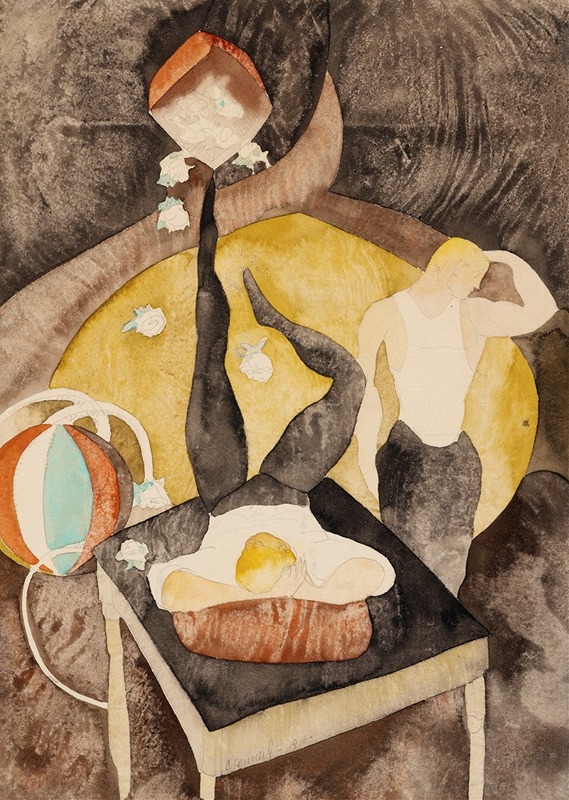
In Vaudeville Two Acrobat-Jugglers
A hand-painted replica of Charles Demuth’s masterpiece In Vaudeville Two Acrobat-Jugglers, meticulously crafted by professional artists to capture the true essence of the original. Each piece is created with museum-quality canvas and rare mineral pigments, carefully painted by experienced artists with delicate brushstrokes and rich, layered colors to perfectly recreate the texture of the original artwork. Unlike machine-printed reproductions, this hand-painted version brings the painting to life, infused with the artist’s emotions and skill in every stroke. Whether for personal collection or home decoration, it instantly elevates the artistic atmosphere of any space.
Charles Demuth's painting "In Vaudeville: Two Acrobat-Jugglers" is a notable work that reflects the artist's engagement with modernist themes and his interest in capturing the dynamic energy of early 20th-century entertainment. Demuth, an American painter associated with the Precisionist movement, was known for his ability to blend realism with abstract forms, and this painting is a testament to his unique style.
Created in 1917, "In Vaudeville: Two Acrobat-Jugglers" is part of a series of works where Demuth explored the vibrant world of vaudeville, a popular theatrical genre that featured a variety of acts including musicians, dancers, comedians, and acrobats. Vaudeville was a significant part of American entertainment during the late 19th and early 20th centuries, and Demuth's interest in this subject matter reflects the cultural milieu of his time.
The painting depicts two acrobat-jugglers in action, capturing the fluidity and motion of their performance. Demuth's use of bold lines and geometric shapes is characteristic of his Precisionist style, which often emphasized clarity and order. The composition of the painting suggests movement and rhythm, drawing the viewer's eye across the canvas and conveying the lively atmosphere of a vaudeville performance.
Demuth's work is often noted for its exploration of modern life and its intersection with art. In "In Vaudeville: Two Acrobat-Jugglers," he employs a modernist approach to depict a traditional form of entertainment, thus bridging the gap between the old and the new. The painting's focus on performers also highlights Demuth's interest in the human figure and his ability to convey emotion and expression through form and color.
The painting is executed in watercolor, a medium that Demuth frequently used to achieve a delicate balance between transparency and opacity. This choice of medium allows for a subtle interplay of light and shadow, enhancing the sense of movement and vitality in the scene. Demuth's skillful handling of watercolor is evident in the way he captures the nuances of the performers' costumes and the stage setting.
Charles Demuth was part of a circle of artists and writers in the early 20th century who were pushing the boundaries of traditional art forms. His work was influenced by his interactions with other modernist artists, as well as his exposure to European avant-garde movements during his travels. Despite his relatively short life, Demuth left a lasting impact on American art, and "In Vaudeville: Two Acrobat-Jugglers" is a prime example of his innovative approach to painting.
Today, Demuth's works are celebrated for their contribution to the development of American modernism. "In Vaudeville: Two Acrobat-Jugglers" remains an important piece within his oeuvre, illustrating his fascination with contemporary culture and his mastery of form and technique. The painting is housed in a collection that continues to attract interest from art historians and enthusiasts who appreciate Demuth's unique vision and his role in shaping the trajectory of modern art in the United States.





